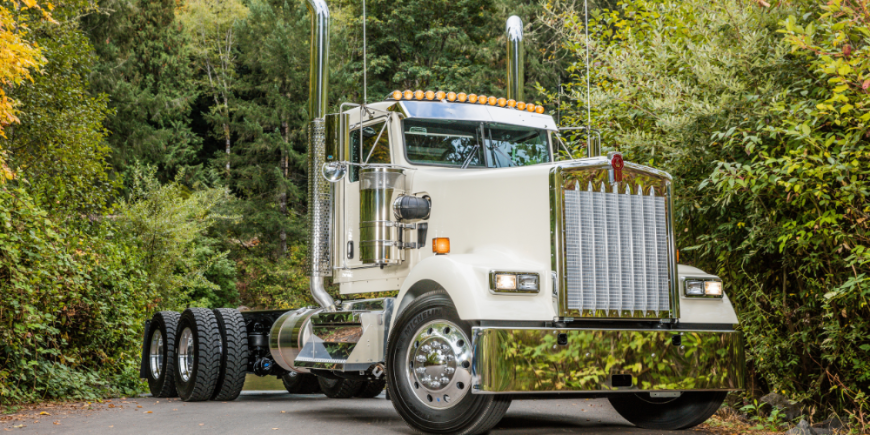Whether you’ve been a company driver for decades or just earned your CDL, you’ve probably thought about what it would be like to become an owner-operator. Setting your own schedule, owning your own truck, running your own business all sound great. But what does it really take to become an owner-operator? It’s not easy, but with a thoughtful, informed plan, it’s possible.
What Are the Types of Owner-Operator?
Before you start, you’ll need to decide which path makes the most sense for your trucking business:
- Leased Owner-Operators: Contract with a carrier to haul the company’s secured loads.
- Independent Owner-Operators: Operate without a carrier contract, securing and hauling your own loads.
Leased vs. Independent Owner-Operators: Which Is Right for You?
There’s no one-size-fits-all answer. Both paths can lead to profitable trucking careers, but each comes with unique challenges and advantages.
What Are the Pros of Being a Leased Owner-Operator?
- Company-provided trailers
- Company-secured freight and dispatch
- More consistent loads and miles
- Lower rates on insurance and maintenance
- Company perks like fuel cards, paid tolls, permits, and plates
- Company handles most load paperwork
What Are the Cons of Being a Leased Owner-Operator?
- Lower earnings per mile
- Less flexibility in choosing loads
What Are the Pros of Being an Independent Owner-Operator?
- Freedom to choose your own routes and loads
- Ability to negotiate your rates
- Flexible scheduling
- Greater tax deduction opportunities, especially for fuel, maintenance, and depreciation
What Are the Cons of Being an Independent Owner-Operator?
- Higher costs: insurance, truck payments, repairs, fuel, and tolls
- Must find and secure your own loads or work with a freight broker
- Less predictability in cash flow
Tip: If you’re highly organized and enjoy managing every aspect of your business, independent operation can be very rewarding. If you prefer steady work and fewer administrative obligations, leasing with a carrier might be the better fit.
What Do You Need to Become an Owner-Operator?
Starting your own trucking business involves more than just buying a truck. Here’s your owner-operator startup checklist.
Step 1: How Do You Get Your CDL?
Before anything else, you’ll need your Commercial Driver’s License (CDL). This includes passing your DOT physical, written knowledge test, permit phase, and CDL skills test.
Step 2: How Do You Create a Business Plan?
Don’t buy your first truck before you’ve mapped out your business strategy, including:
- Whether you’ll lease on or operate independently
- Your plan for finding freight
- A detailed breakdown of expected revenue vs. expenses
- Funding sources and financial projections
Step 3: How Do You Register Your Trucking Business?
Apply for an Employer Identification Number (EIN) from the IRS using form SS-4. Once approved, open a dedicated business checking account to separate personal and business finances.
Step 4: Should You Form an LLC, S-Corp, or Sole Proprietorship?
Consult with a tax professional or business attorney to choose the right structure for your trucking business. Most owner-operators start as sole proprietors, but forming an LLC can offer certain liability protections and tax advantages.
Step 5: How Much Does It Cost to Start as an Owner-Operator?
Startup costs vary, but plan to budget $30,000 to $60,000 on average. This should cover:
- A down payment for your truck (and trailer if independent)
- First six months of insurance, fuel, permits, and maintenance
- Emergency funds for unexpected repairs
Step 6: What Insurance and Permits Do You Need?
To comply with state and federal regulations, you’ll need:
- Liability insurance
- Cargo and physical damage coverage
- Non-trucking use insurance
- USDOT number and operating authority
- Any required permits for your route and freight type
Step 7: How to Lease or Buy Your First Truck
When shopping for your rig, weigh your options:
- New Trucks: Financing newer models that provide better fuel efficiency and warranty coverage.
- Used Trucks: Lower upfront costs, but higher potential for maintenance expenses.
Always work with a reputable dealer like Papé Kenworth and ensure you understand your financing terms before you sign.
Step 8: How Do You Find Loads as an Owner-Operator?
- Leasing with a carrier provides steady, company-dispatched loads.
- Independent operators can find freight via load boards, freight brokers, or direct shipper contracts.
Is Becoming an Owner-Operator Right for You?
Becoming an owner-operator comes with freedom and earning potential, but also higher risks and responsibilities. Carefully weigh the pros and cons before making the leap. If you decide to move forward, follow our owner-operator checklist above and use reputable resources to set yourself up for success.
Contact your local Kenworth dealer with any questions or to get started.







